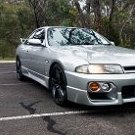Camshaft Changes
Announcements
-
Similar Content
-
Latest Posts
-
By MissMintyR33 · Posted
Looking to sort out a couple of issues on my skyline It recently was rebuilt, however rebuilder long story short did not give two flying effs about the work he did. So moving forward it's running but I have two persistent issues 1) it has a misfire / lag type of issue (was at higher RPMs but I had a dead piggy back ecu removed which improved it) now it's not as bad but still does it at random, I thought it may have been a boost issue I'm running an older turbosmart dual stage controller, turbosmart told me to try running off gate pressure however it still has a lag at random times. It has New MAF, maf plug, coil packs, sparks, CP harness.. injectors tested and cleaned. Factory ECU. 2) Power steering issue. It is tight as anything. Flushed power steering, rebuilt my pump because the bearing was shot. Flushed again still tight (mainly when parking and going slow into my driveway etc) No kinks in hard lines, replaced the lines I could see had cracks. Still tough to steer. I was told to shim a coin and place into the solenoid plug? Is there anything else. My steering angle sensor also has a issue. It's a used one I replaced, does it need to be calibrated? I feel like I've tried everything and this car is my voodoo doll. -
One main filter. Each tank has a prefilter to keep rocks and small children out, then the big main filter that also does water separation. Clogged the first one so bad it was like a rev limiter at 3200rpm. Literally just like dropping the throttle off and maintaining rpm!
-
By Dose Pipe Sutututu · Posted
fark... Brett is beating me in terms of kms -
By Dose Pipe Sutututu · Posted
renovations going well 😆 Assuming each tank has it's own filter? OR does it just merge upstream into 1?
-





Recommended Posts
Create an account or sign in to comment
You need to be a member in order to leave a comment
Create an account
Sign up for a new account in our community. It's easy!
Register a new accountSign in
Already have an account? Sign in here.
Sign In Now